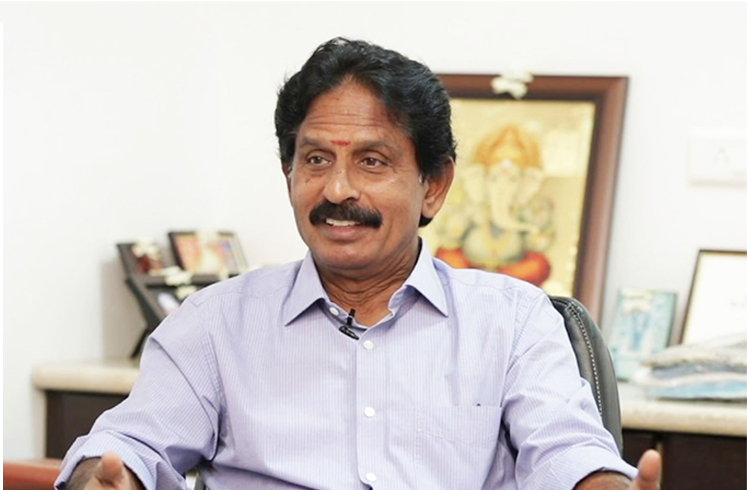Tiruppur is the ‘town of export excellence’, with 5,000 factories employing over 600,000 workers and contributing to 50% of India’s knitwear exports. In June last year, Union Minister Piyush Goyal announced setting up 75 Tiruppur-like textile hubs across the country. A small district in the west of Tamil Nadu becoming a model hub for the country and being referred to by the Central Government for its ambitious PM-MITRA project itself speaks volumes about the non-descript district’s dominance in the industry. Tiruppur district, also a textile cluster, is located to the West of Tamil Nadu and is about 463km away south-west of Chennai.

Tiruppur: The Model Hub for Textile Industry
Tiruppur, which has rightly been titled as ‘the town of export excellence’, houses around 5,000 factories – tiny, small, medium, and big – contributes to 50% of India’s knitwear exports, and employs over 6,00,000 workers. Tiruppur’s textile story has its genesis in the 1970s when some traders set up dyeing units. A decade later, it started receiving export orders. The major push, however, came in the 1990s, largely due to the reforms brought in as part of economic liberalization. However, they were pitfalls, but the learnings by the business people here have made Tiruppur what it is today.
Tiruppur’s Textile Story and Environmental Impact
The business back then largely involved high volumes of cotton, a water- intensive crop, and hard chemicals such as dyes. To put things into perspective, it takes around 20,000 liters of water to produce one kilogram of cotton and an extra 200 liters of water per kilogram of fabric for dyeing and finishing. As the business flourished and profits soared, the environment bore the brunt. The popular river Noyyal served as a testimony to the damage the industry then caused.
Collective Efforts for Sustainable Textile Manufacturing
Soon, the Pollution Control Board swung into action. On the other hand, the industry collectively took the responsibility to assuage the damage. Further, a few creative businesspersons looked for methods to comply with the new orders without compromising on the profits or the quality of their products. They collaborated with businesses to develop biodegradable chemicals as an alternative to the hard ones. They also set up research and development teams within their organizations.

In 2005, the Tiruppur Exporters’ Association and the Dyers’ Association of Tiruppur launched ‘Zero Liquid Discharge’ (ZLD) to recycle and reuse all the wastewater generated. ZLD entails the installation of effluent treatment plants, which treat the wastewater generated in the textile units. The treated water is used again in various production steps.
Tiruppur’s Initiatives as a Blueprint for Water Conservation
The results were magical. In 10 years, Tiruppur reduced its water consumption by around 50%, according to a report by the Confederation of Indian Industry. Today, Tiruppur boasts 300 dyeing units and 60 processing units that recycle almost 12 crore liters of water a day. The collective efforts initiative rightly earned several national and international fame for Tiruppur’s textile industry. While the government bestowed upon it the honor of being a “model cluster” for eco-friendly textile manufacturing, the United Nations Industrial Development Organisation and the World Bank lent their support to launch similar initiatives in other countries.
Championing Sustainable Development Goals
Tiruppur’s textile industry has also been at the forefront of championing the Sustainable Development Goals 2030 by embedding them in its manufacturing practices, including the use of renewable energy sources, waste management, and water conservation. The industry has also implemented several initiatives to promote responsible consumption and production practices such as developing eco-friendly fabrics that are biodegradable and have a lower carbon footprint.

Promoting Sustainability in Agriculture Practices
Further, the industry has also been promoting sustainability in agriculture practices, including the use of organic cotton, which reduces water consumption and the use of chemical fertilizers and promotes afforestation. This very well falls in line with Prime Minister Narendra Modi’s ambitious 5F – farm to fiber to the factory to fashion to Foreign – plan and the ‘Saptarshi’ or the seven priorities outlined in the Budget. This promotes green growth as part of the development plan for the next 25 years.
Towards a Greener Future
Water is the very source of life. Every individual, business, and nation must take all efforts to ensure water conservation, at all levels. The initiatives by the textile manufacturers in Tiruppur, therefore, assume significance as they can become blueprints for the sector, globally, to incorporate water conservation as part of their business practice. These contributions will also go a long way towards achieving the SDGs, including responsible consumption and production and climate action. By continuing these initiatives and innovating better climate-friendly practices, Tiruppur has the potential to lead the world toward a greener future.